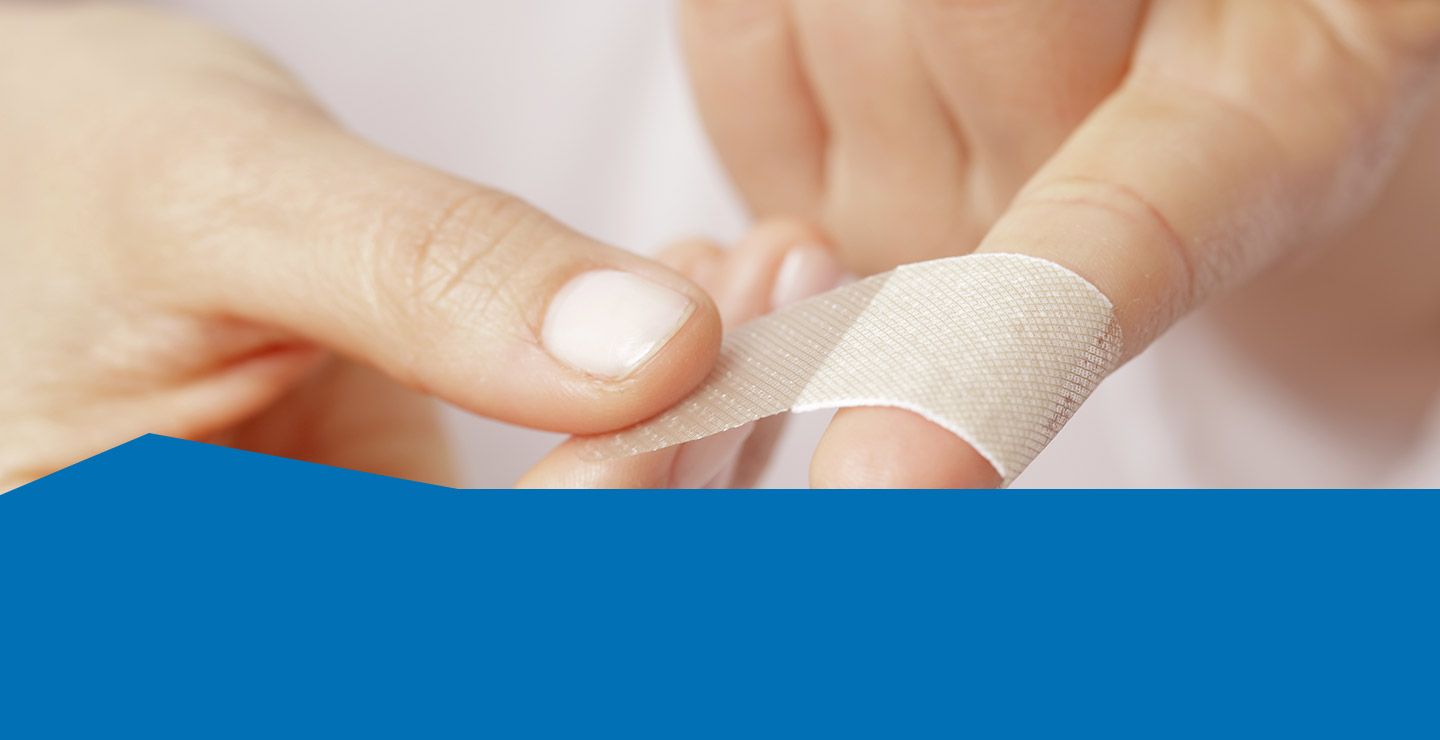Scratches
Abrasions
Abrasions are superficial, usually harmless injuries, which affect only the uppermost layers of skin, but on a larger area. Abrasions are caused by the skin sliding along a rough surface. They often affect the knees, elbows, or palms when falling. Due to the abrasion of the skin cells, the smallest nerve endings of the dermis are exposed, which is why abrasions can be very painful. In case of abrasions, wound secretion might occur, which is why covering the affected area with a protective plaster is recommended for the healing process.
Small cuts
A cut is one of the most common household injuries. Just one slip with the kitchen knife, and you have a cut: The skin and the underlying tissue are separated and can cause heavy bleeding. But not only knives cause cuts. Paper or hard grasses can also cut into the skin. If the incision involves the extremities, then the arm or leg should be raised and a compress should be gently pressed onto the wound to stop the bleeding.
Although we have created all our texts with the utmost care, these are no substitute for medical treatment and advice. These pages are not intended as a guide to self-medication and treatment. For questions about wound treatment, please always contact a healthcare professional.
No matter which type of wound it is: In case of bleeding or contamination, the wound should always be rinsed under running lukewarm water (drinking water quality) and disinfected with a suitable agent, e.g. wound disinfection spray.
A doctor should be consulted if
• the wound is very deep and does not stop bleeding,
• it has been caused by an animal or by another human being
• it is severely contaminated
• the wound doesn’t heal after a while and still hurts, bleeds or swells
